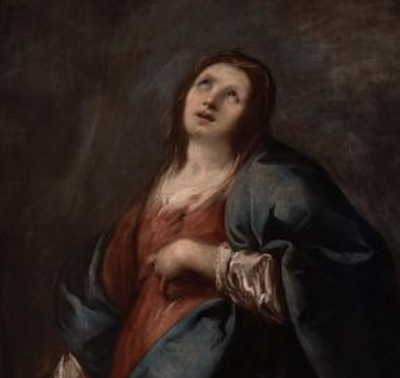Flemish school; second third of the seventeenth century. "Pietát". Oil on copper. It presents faults, jumps, repaints and restorations. Inscriptions o
Lot 98
About Seller
Setdart Auction House
Carrer Aragó 346
Barcelona
Spain
Setdart Subastas was born in 2004 and is currently the first online art auction in Spain with solidity, prestige and reliability guaranteed by our more than 60,000 users. Setdart has a young, dynamic and enterprising team ready to successfully manage the purchase and sale of art works through custom...Read more
Estimate:
EUR€3,000 - EUR€4,000
$3,225.81 - $4,301.08
Absentee vs Live bid
Two ways to bid:
- Leave a max absentee bid and the platform will bid on your behalf up to your maximum bid during the live auction.
- Bid live during the auction and your bids will be submitted real-time to the auctioneer.
Bid Increments
| Price | Bid Increment |
|---|---|
| EUR€0 | EUR€10 |
| EUR€200 | EUR€25 |
| EUR€500 | EUR€50 |
| EUR€1,000 | EUR€100 |
| EUR€3,000 | EUR€200 |
| EUR€5,000 | EUR€500 |
| EUR€10,000 | EUR€1,000 |
| EUR€20,000 | EUR€2,000 |
| EUR€50,000 | EUR€5,000 |
About Auction
By Setdart Auction House
May 31, 2021
Set Reminder
2021-05-31 08:30:00
2021-05-31 08:30:00
America/New_York
Bidsquare
Bidsquare : OLD MASTERS - Day 1
https://www.bidsquare.com/auctions/setdart-auction-house/old-masters---day-1-6998
Setdart Auction House sofia@setdart.com
Setdart Auction House sofia@setdart.com
- Lot Description
Flemish school; second third of the seventeenth century. "Pietát". Oil on copper. It presents faults, jumps, repaints and restorations. Inscriptions on the back. It has an adapted 17th century Spanish frame, made of carved and gilded wood. Measures: 50 x 65 cm; 72.5 x 87 cm (frame). In the inscriptions on the back, an illegible signature can be seen, next to the legend that reads: "The Angel of Ribera". In this work the author offers us an image that follows in a very precise way the model of Pietát of 1628-1630, made by Van Dyck, which today is located in the Alte pinakothek of Munich. Both the composition and the characters faithfully follow this work, including a very similar palette, whose lightness is more evident in the Munich painting. The author shows a piety full of allegorical meaning, in which Mary and Jesus are accompanied by two angels and three heads of child angels contemplating and lamenting the death of Christ. In addition, the author has arranged the main instruments of the Passion: the crown of thorns and the nails with which his body was nailed to the cross. We clearly see three nails, one for the feet and two for the hands, following a typical iconography of this time. During the Middle Ages the form with four nails was preferred, but in Renaissance and Baroque examples it usually appears with three. This formula will be maintained over time, although in Spain it will return to the iconography of four nails due to the influence of the writings of Francisco Pacheco. On the other hand, in this case the presence of these symbols of the Passion is also justified in narrative terms, since they would have been removed from the body of Christ, after taking him down from the cross. The figures appear forming an asymmetrical composition determined by typically baroque diagonals, which provide dynamism and enhance the drama of the scene. The author focuses the attention of the scene in the foreground, where the characters are placed as a frieze, practically all in the same term, except for the small angels that are suspended in the sky. Mary remains oblivious to what is happening around her, with her arms open in supplication and her gaze raised towards heaven. An attitude that invites the spectator to empathize with the pain that unfolds in the scene, as if he were another actor, following the purely theatrical aesthetic concept so typical of the baroque spirit. Iconographically, the Pietà is a very repeated theme in the history of art, especially since the Renaissance. It is an image taken from the Passion, starring a sorrowful Virgin Mary holding the dead body of her son. In fact, it is a plastic representation of Mary's pain before the truth of her dead son, and in fact from this theme will derive the representations of the Dolorosa, in which only the Virgin appears. The iconography of the Pietà arises from a gradual evolution of five centuries and, according to Panofsky, derives from the theme of the Byzantine Threnos, the lamentation of the Virgin over the dead body of Jesus, as well as from the Virgin of Humility. The first artists to see the possibilities of this theme were German sculptors, the first example being found in the city of Coburg, a piece from around 1320. With the passage of time the iconography will spread throughout Europe, and already in the seventeenth century, after the Counter-Reformation, it became one of the most important themes of devotional painting.
- Shipping Info
-
In-house shipping available. Please inquire at admin@setdart.com.
-
- Buyer's Premium



 EUR
EUR CAD
CAD AUD
AUD GBP
GBP MXN
MXN HKD
HKD CNY
CNY MYR
MYR SEK
SEK SGD
SGD CHF
CHF THB
THB

















